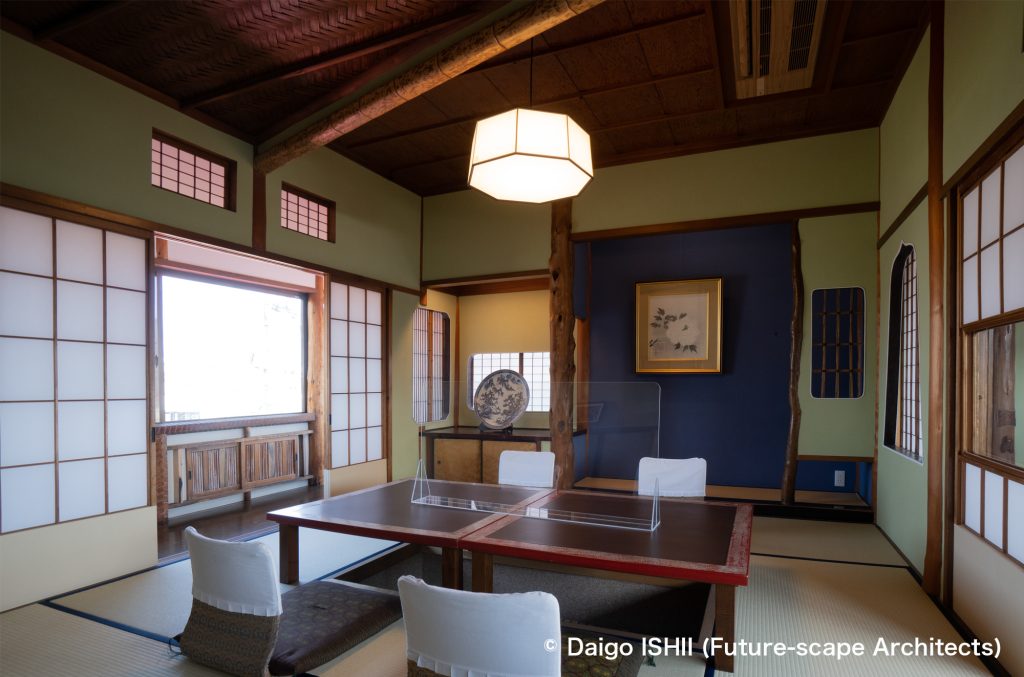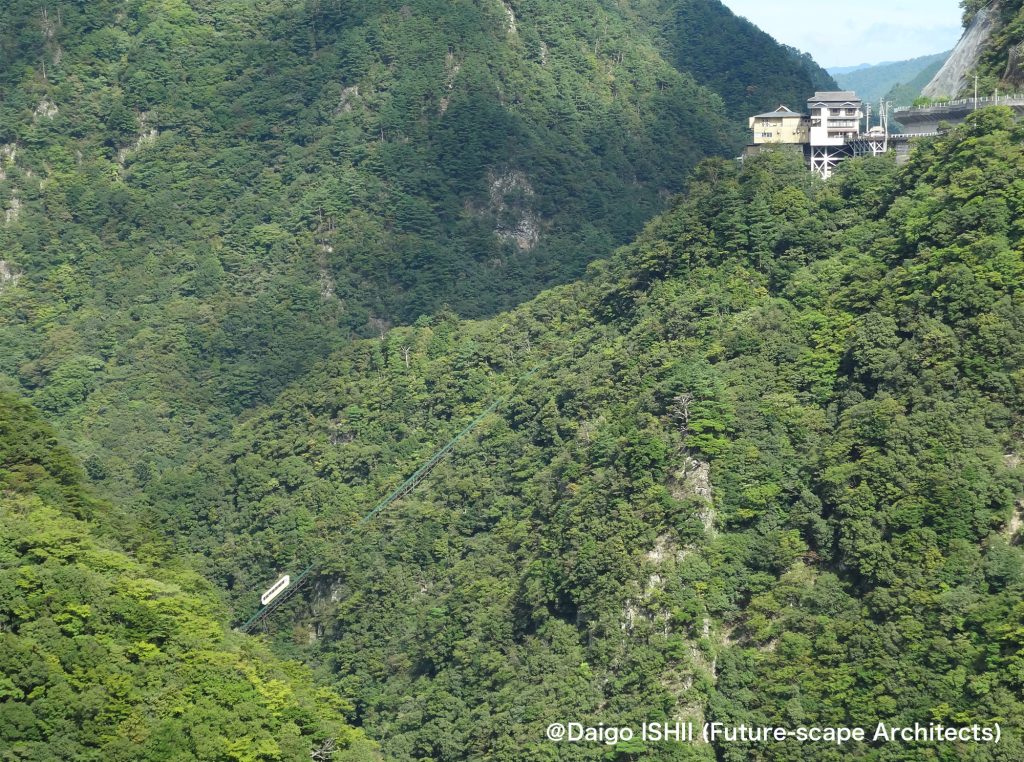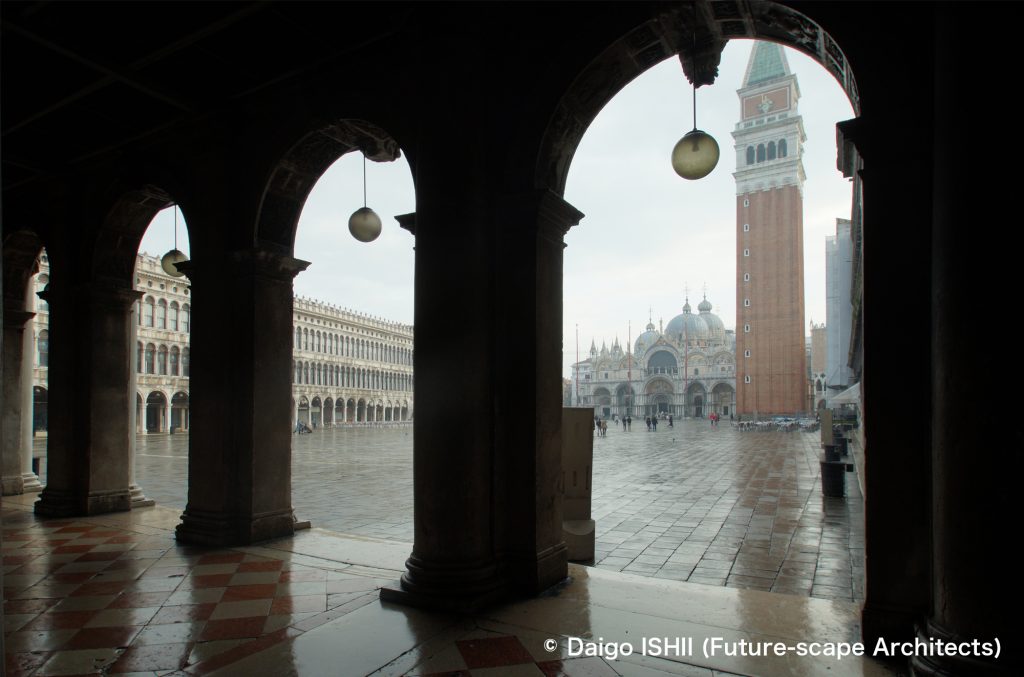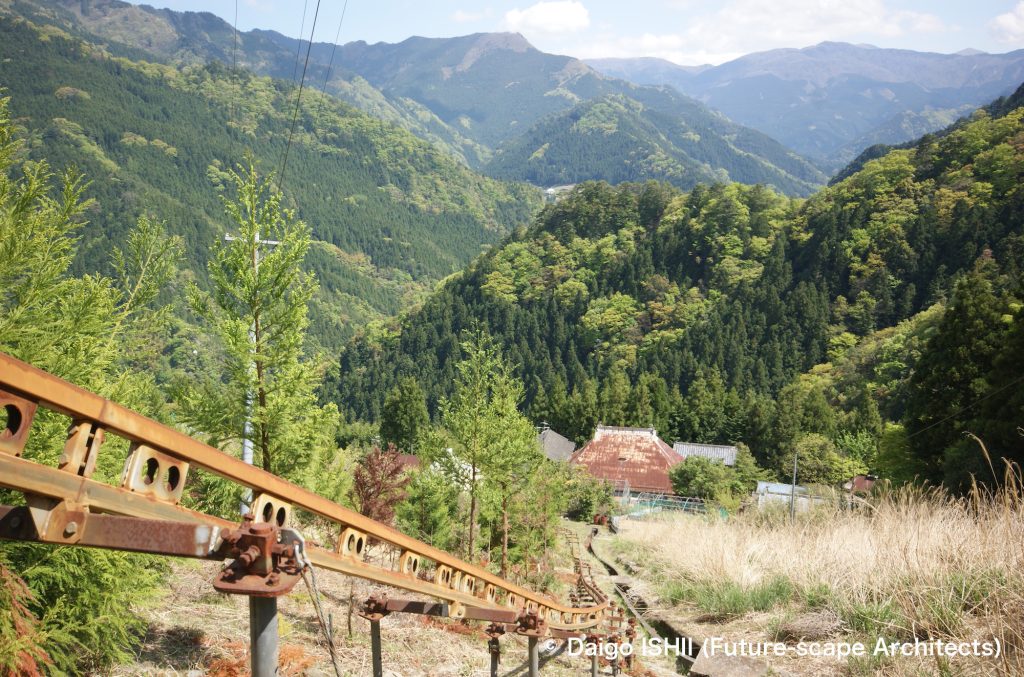住みたい街の筆頭、コペンハーゲン。
Copenhagen is one of the best cities for me to live in.
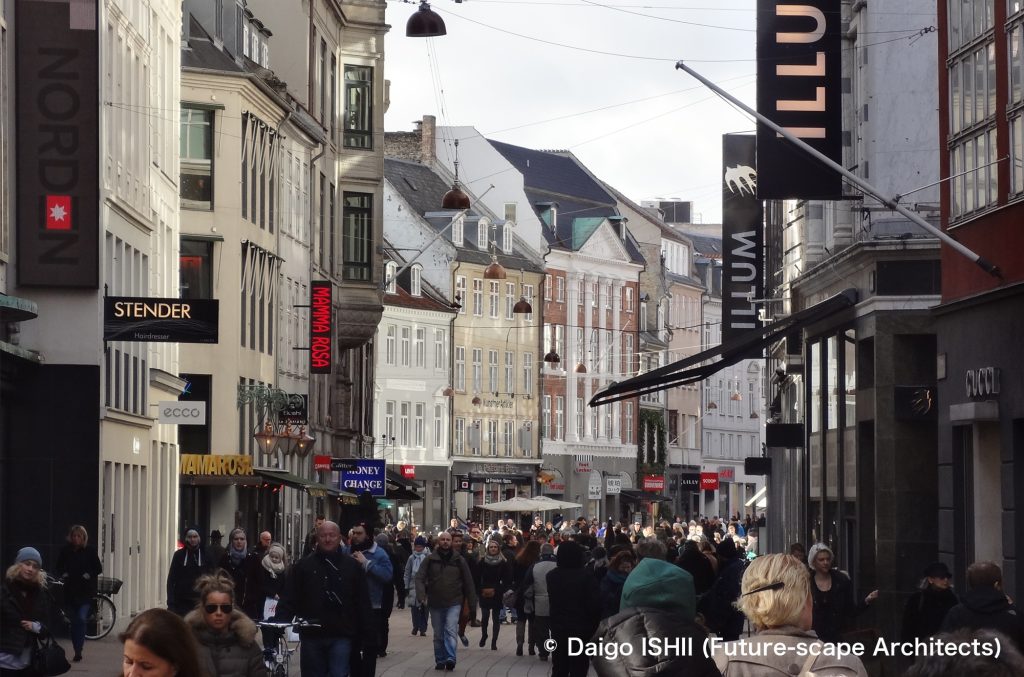
See the main street of Strøget. As going east towards Kongens Nytorv station at the end point, the number of high-class shops increases. Brand shops start around here.
https://goo.gl/maps/EPz2Qu47nuqhgKS89
居心地のいい街の中心街は、蛇行する複雑な街路のネットワークに、スケールの小さい建物が可愛らしく、歩き回るのに飽きません。いつの間にか方向がわからなくなり、違う場所に出てしまうのも、観光客には楽しい。
その中心街の中央軸まわりは、1962年に始まった歩行者天国ストロイエ。世界でも初期の例で、ヨーロッパ有数の規模です。自動車文化の伸びつつあった時代、計画には大反対が起こったそうですが、数年で歩行量が以前を大きく上回ると、論争は消えました。
中心街の自動車動線を、ストロイエが分断しているせいか、歩行者天国をはずれても、車の通行は少なく、のびのびと歩ける地区。
その中心街で最大の中庭を持つ集合住宅の一室を、市の元都市計画局長だった女性が民泊に出しているのを、AirBnBで見つけました。お話聞きたさと、最大の中庭見たさに宿泊をお願いしました。
細い街路に建物が隙間なく並ぶ中心街の公空間からは想像できませんでしたが、建物に囲まれた街区の内側には、中庭というより、日本なら、巨大な公園とでも言うべき緑豊かなプライベートガーデンが広がっていました。宿泊したフラットも、街路側の昼なお暗々とした部屋に対して、中庭側の部屋は、太陽が燦々と差し込み、別格の居住環境。便利な中心街の真ん中に、こんな自然光、自然風にあふれた住環境があるのが驚き。
街路から見えるコペンハーゲンが、コペンハーゲンの都市のイメージのすべてと思っていましたが、それは一面でした。建て込んだ公空間の楽しさに、中庭のあるプライベート空間ののびやかさが加わり、ますますコペンハーゲンに住みたくなりました。
The cozy downtown has an intricate, meandering network of streets and cute, small-scale buildings, so I didn't get tired of walking around. It was fun to get lost and end up in a different place than planned.
Around the central axis of the downtown is the pedestrian zone Strøget, which began in 1962. It was one of the earliest examples in the world and one of the largest in Europe. It is said that there was a great deal of opposition to the plan when the automobile culture was growing. However, the controversy disappeared when the amount of walking greatly exceeded the previous time in a few years.
Since Strøget divided the traffic line of automobiles in the center of the downtown, there was little car traffic, and people could walk freely even outside the pedestrian zone.
On Airbnb, I found a room in an apartment complex with the largest courtyard in downtown Copenhagen. A woman, who had been the head of the city planning department, rented out it. I asked for accommodation because I wanted to hear her story and see the largest courtyard.
I couldn't imagine the feature of the courtyard from the public space of downtown where buildings were lined up in narrow streets. Inside the city block surrounded by buildings was a private garden full of greenery like a big park, rather than a courtyard. In the flat where I stayed, the room on the street side was gloomy even during the daytime, whereas the sun shined brightly into the room on the courtyard side, creating a splendid living environment. I was surprised that there was a living climate full of natural light and a breeze in the middle of the convenient downtown.
I wanted to live in Copenhagen even more because of the enjoyment of the built-in public space and the spaciousness of the private space with the courtyard.
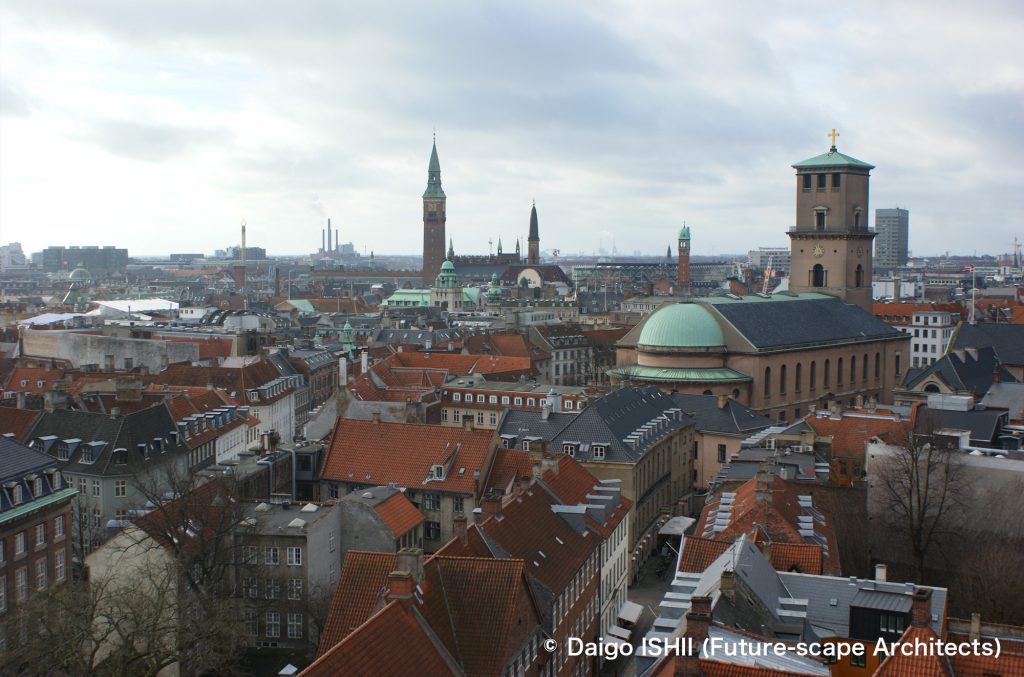
See downtown Copenhagen from the 17th-century Round Tower attached to the Trinitatis Church.
https://goo.gl/maps/AG9qQEWYKg4BM9Jt8
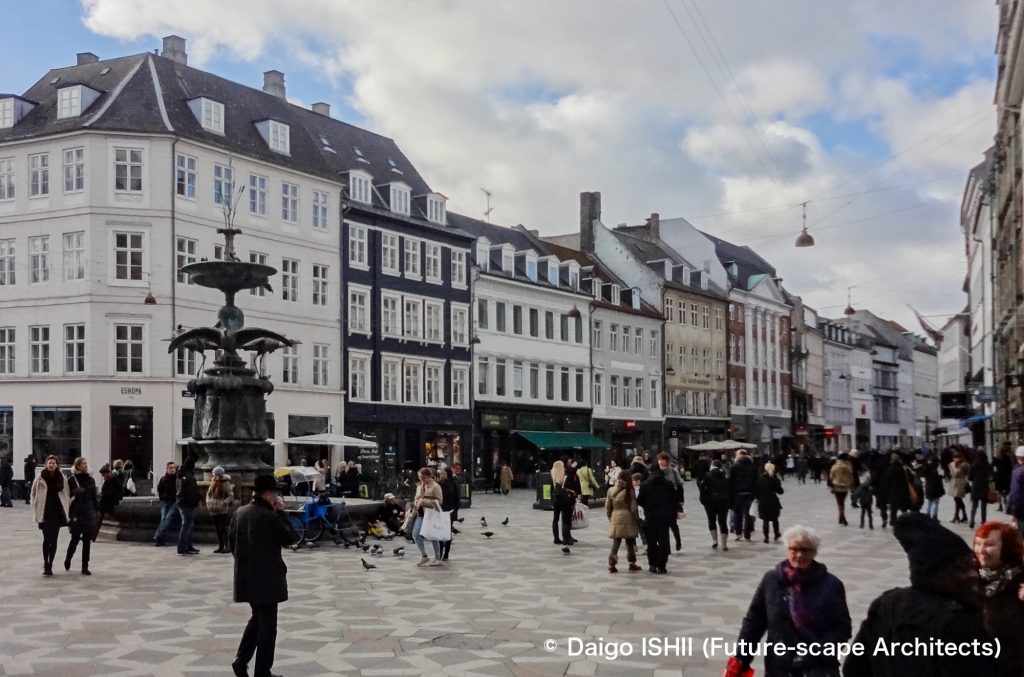
See the Amager square with the Stork Fountain at the halfway point of Strøget.
https://goo.gl/maps/n3uPg6J3ek14gH8d7
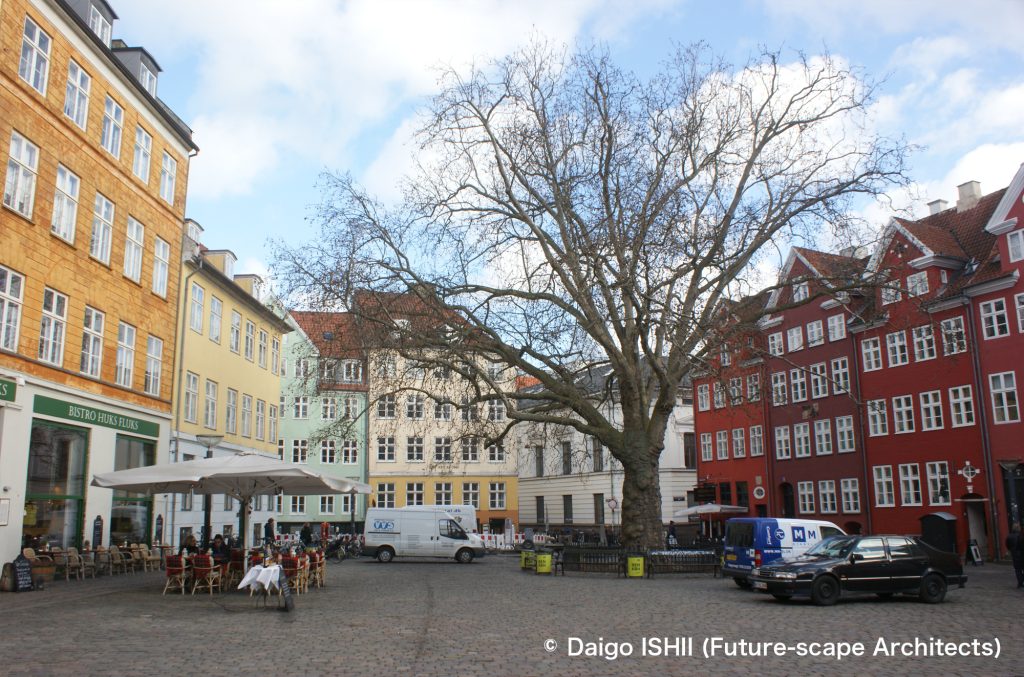
See the cozy Gråbrødre square, surrounded by lovely buildings.
https://goo.gl/maps/AP5vZ1pR5PsgBGmD8
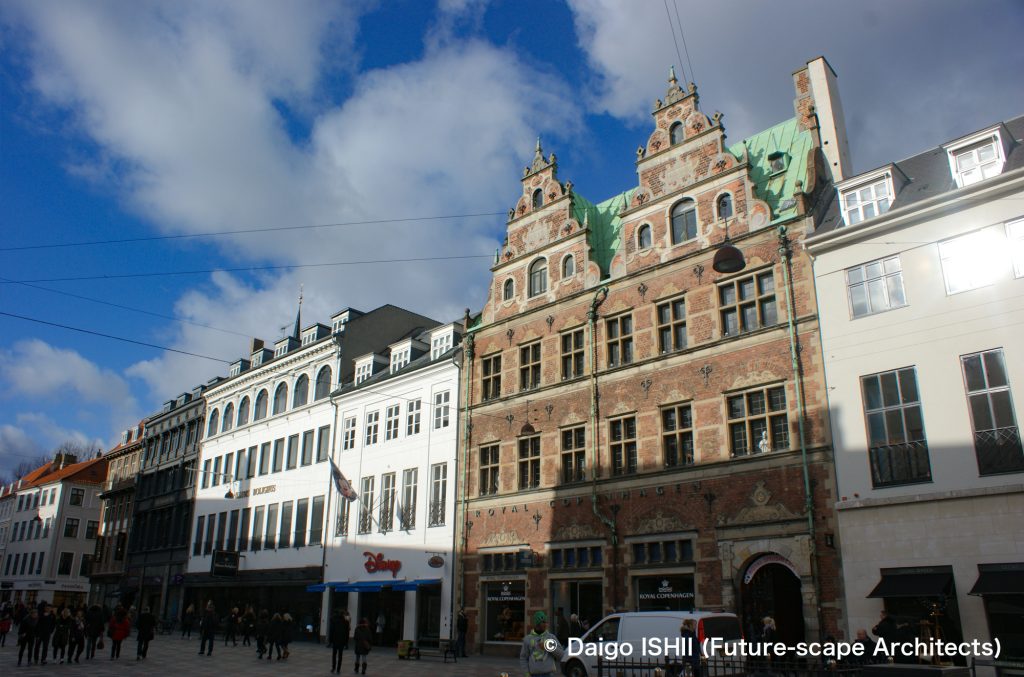
See streetscape of Amager Square. The Northern Renaissance building built with brick was completed in 1616 and is now the flagship store of Royal Copenhagen.
https://goo.gl/maps/n3uPg6J3ek14gH8d7

See Strøget from the entrance on the west side. This area near Rådhuspladsen station is lined with popular shops.
https://goo.gl/maps/G4fFjDFSbixJuusS8
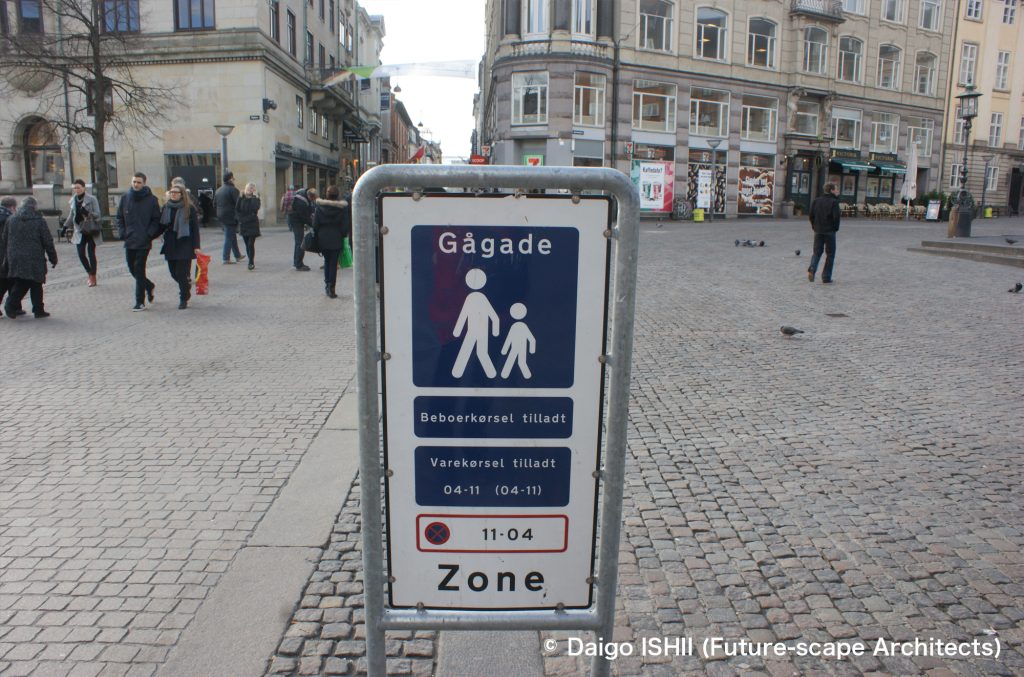
A sign for Gågade, which means pedestrian zone in Danish, is placed on Strøget. Vehicles are allowed to pass between 4:00 and 11:00 in the morning.
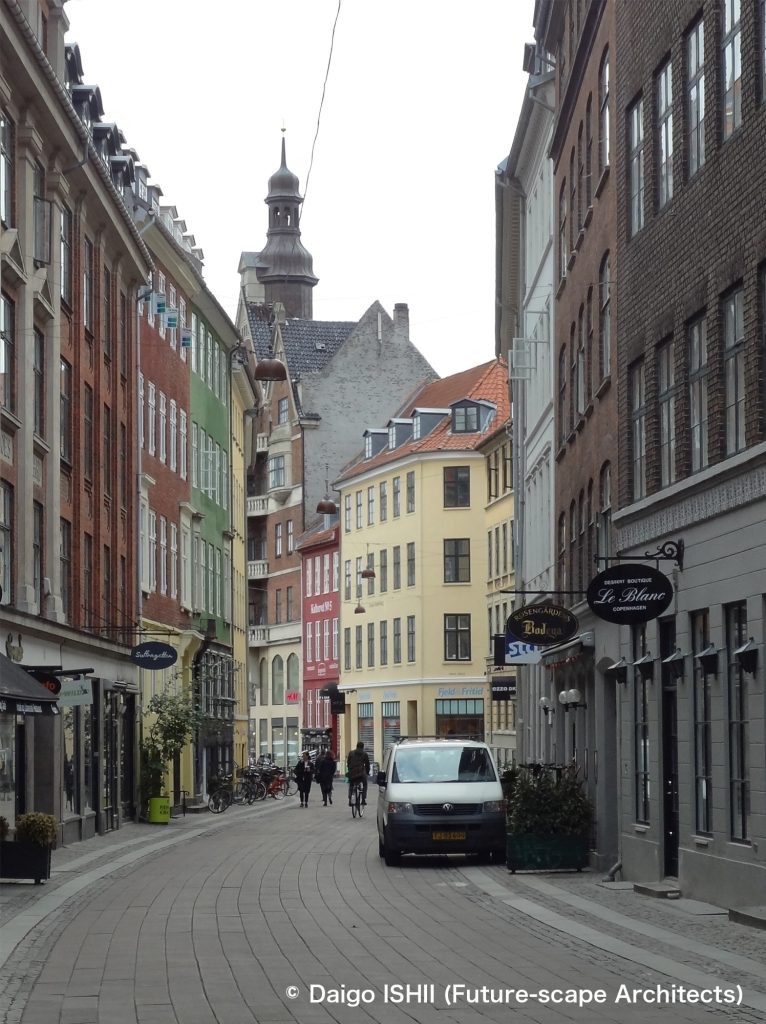
See Rosengården street near Nørreport station on the north side of downtown Copenhagen. The largest private garden in the downtown spreads behind the buildings on the right side.
https://goo.gl/maps/Ma7TbXLTKwLfmnd69
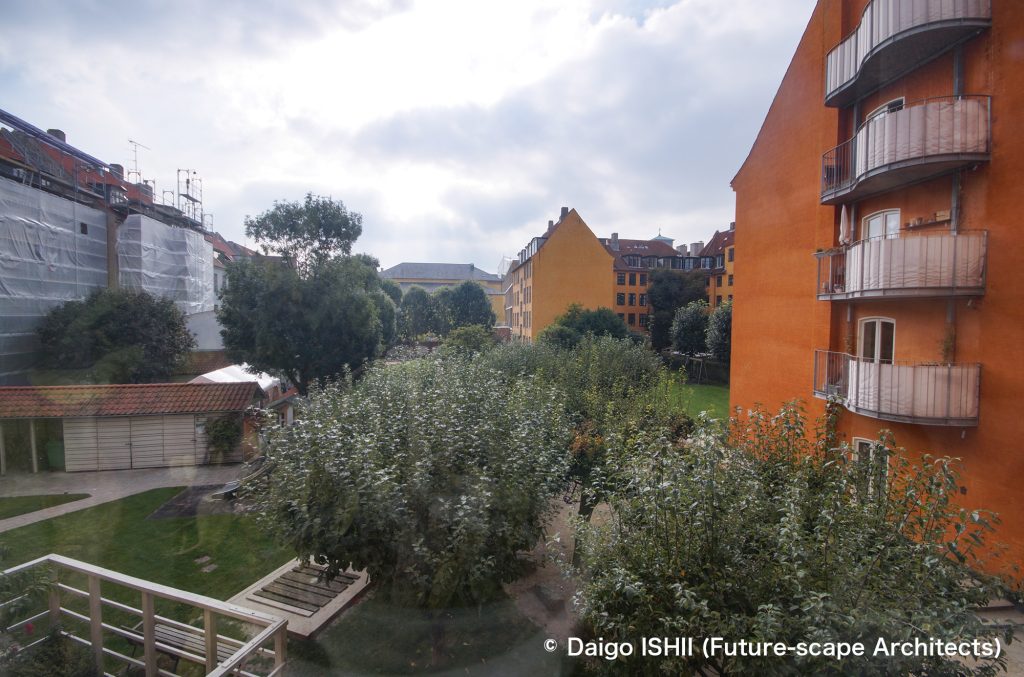
See the largest private garden in downtown Copenhagen from a room. Surrounded by buildings that border the city block, the space, which would be a large park in Japan, is full of greenery. The cat of the former city planning department director was also kept here during the day.
https://goo.gl/maps/3BbSJu7mrGcpgUBm7
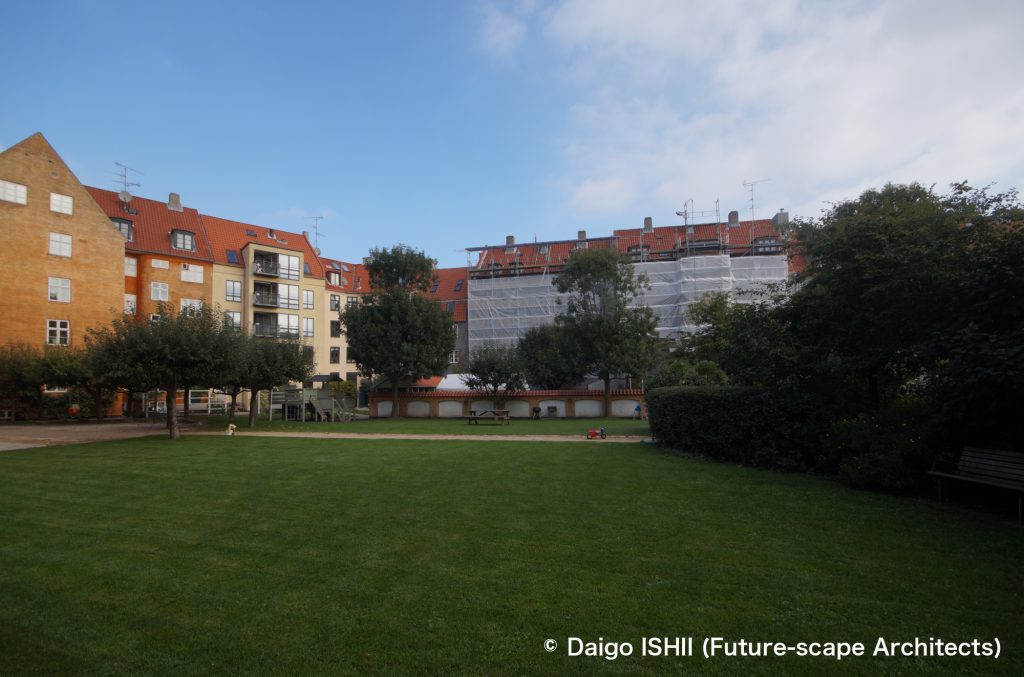
See the largest private garden in downtown Copenhagen from the center of the garden. There is no gate to enter directly and freely from the street outside, so children can play with peace of mind.
https://goo.gl/maps/3BbSJu7mrGcpgUBm7

The cat of the former head of the city planning department loved the private garden and kept it free all day long. Even at night, when I opened the front door, the cat immediately jumped down the stairs toward the private garden, so I had to hurry to catch it.
ご感想はこちらへ / Click here for your impressions
参考文献 / reference
Wikipedia
写真の無断使用、転用はご遠慮下さい。/ Please do not use or upload our photos without permission.




